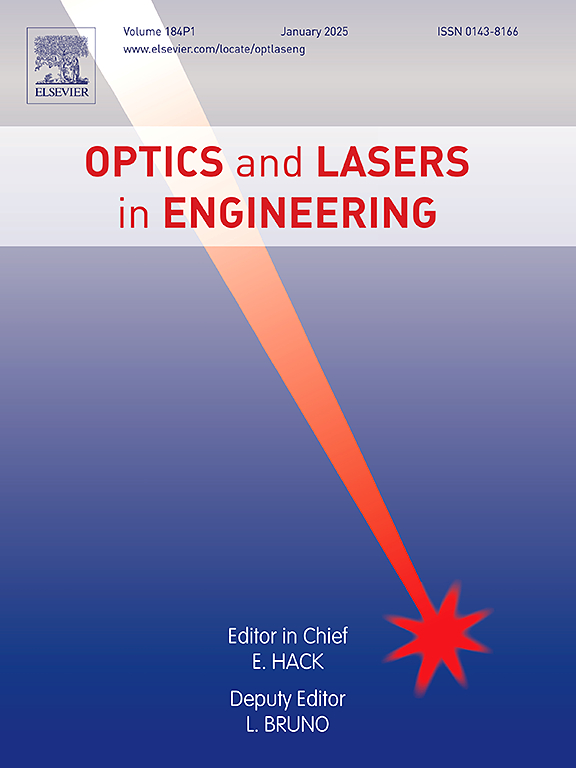CFRP delamination defect detection by dynamic scanning thermography based on infrared feature reconstruction
IF 3.5
2区 工程技术
Q2 OPTICS
引用次数: 0
Abstract
Shape information detection and evaluation of internal delamination defects in carbon fiber reinforced polymers (CFRP) is of great importance in industrial production and applications. In this paper, a new method for imaging and edge detection of internal delamination defects in CFRP using continuous line laser scanning excitation thermography is proposed. Firstly, a Following Laser Scanning Thermography (FLST) system is set up in the form of a heat source and camera that are stationary and the test piece is moving. It can perform fast and high-precision nondestructive testing of large workpieces. Subsequently, the advantages of FLST are utilized to reconstruct the infrared images of defects by simple feature lines, and the effects of different parameters on the reconstructed images are analyzed. Finally, the morphological information characterization of internal delamination defects in CFRP is realized by motion blur removal method combined with edge detection algorithm. The results demonstrate that the use of FLST system, combined with image reconstruction and motion blur removal method has high accuracy and efficiency in the non-destructive testing and evaluation of delamination defects.
求助全文
约1分钟内获得全文
求助全文
来源期刊

Optics and Lasers in Engineering
工程技术-光学
CiteScore
8.90
自引率
8.70%
发文量
384
审稿时长
42 days
期刊介绍:
Optics and Lasers in Engineering aims at providing an international forum for the interchange of information on the development of optical techniques and laser technology in engineering. Emphasis is placed on contributions targeted at the practical use of methods and devices, the development and enhancement of solutions and new theoretical concepts for experimental methods.
Optics and Lasers in Engineering reflects the main areas in which optical methods are being used and developed for an engineering environment. Manuscripts should offer clear evidence of novelty and significance. Papers focusing on parameter optimization or computational issues are not suitable. Similarly, papers focussed on an application rather than the optical method fall outside the journal''s scope. The scope of the journal is defined to include the following:
-Optical Metrology-
Optical Methods for 3D visualization and virtual engineering-
Optical Techniques for Microsystems-
Imaging, Microscopy and Adaptive Optics-
Computational Imaging-
Laser methods in manufacturing-
Integrated optical and photonic sensors-
Optics and Photonics in Life Science-
Hyperspectral and spectroscopic methods-
Infrared and Terahertz techniques
 求助内容:
求助内容: 应助结果提醒方式:
应助结果提醒方式:


